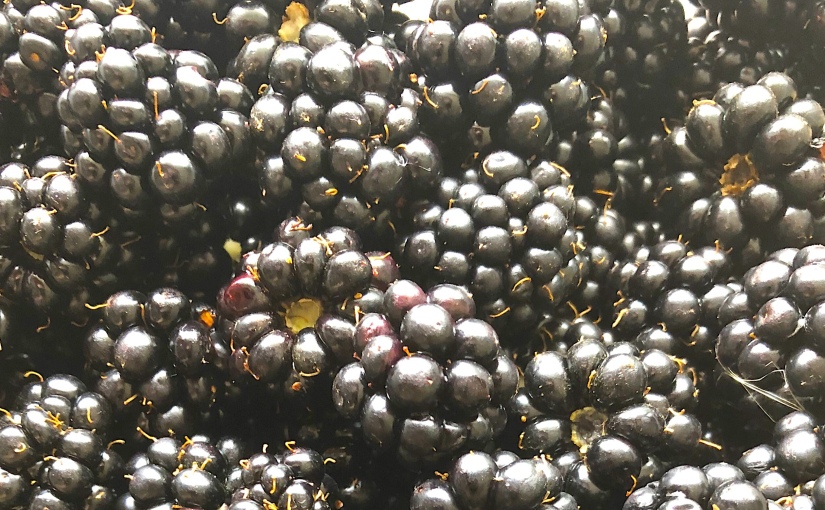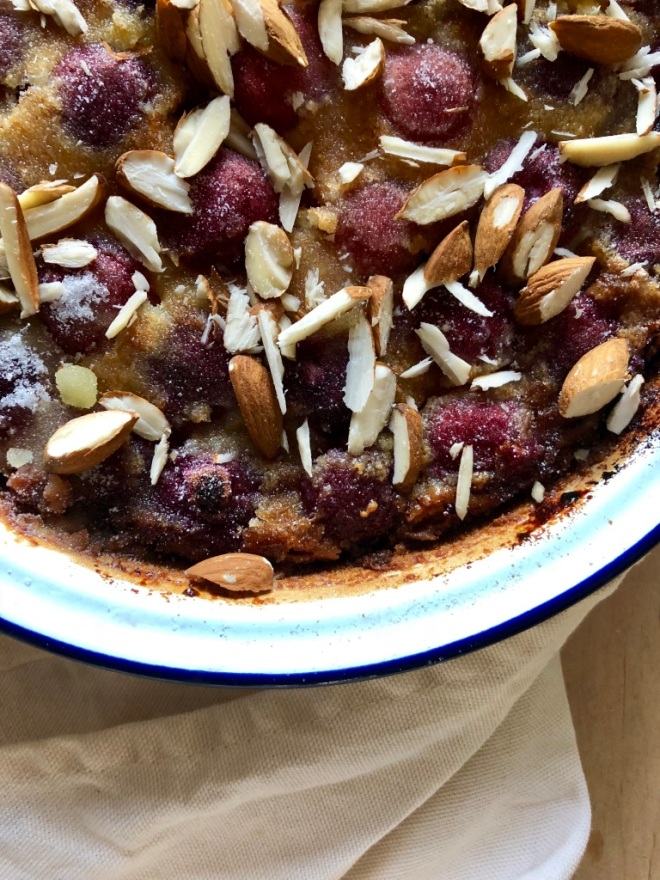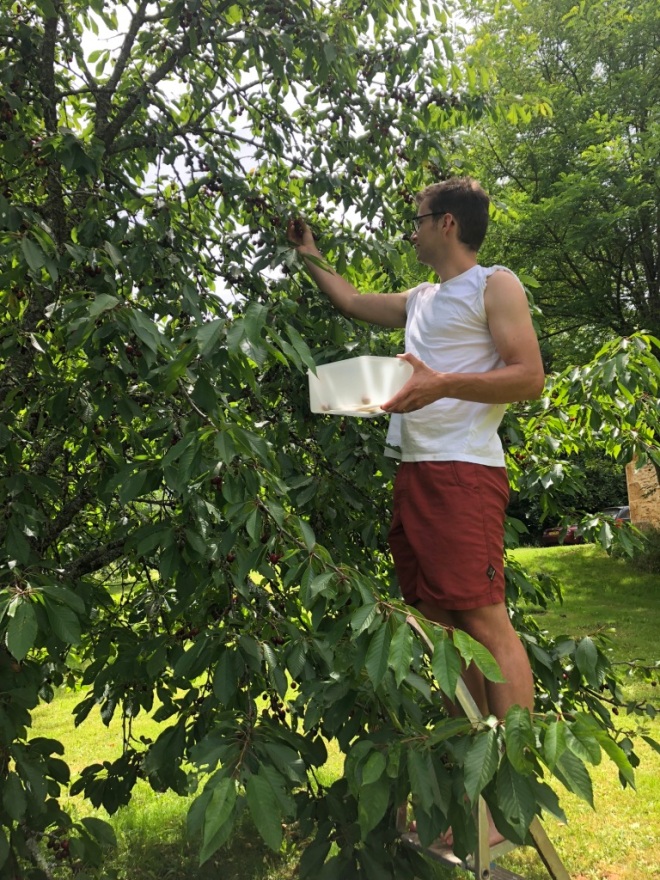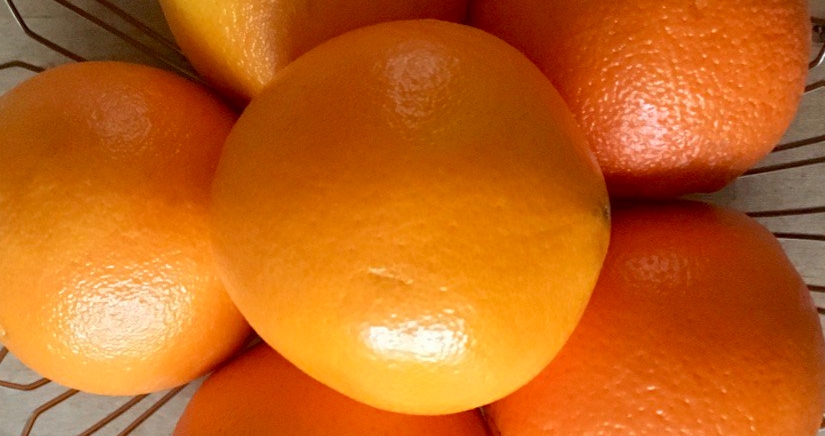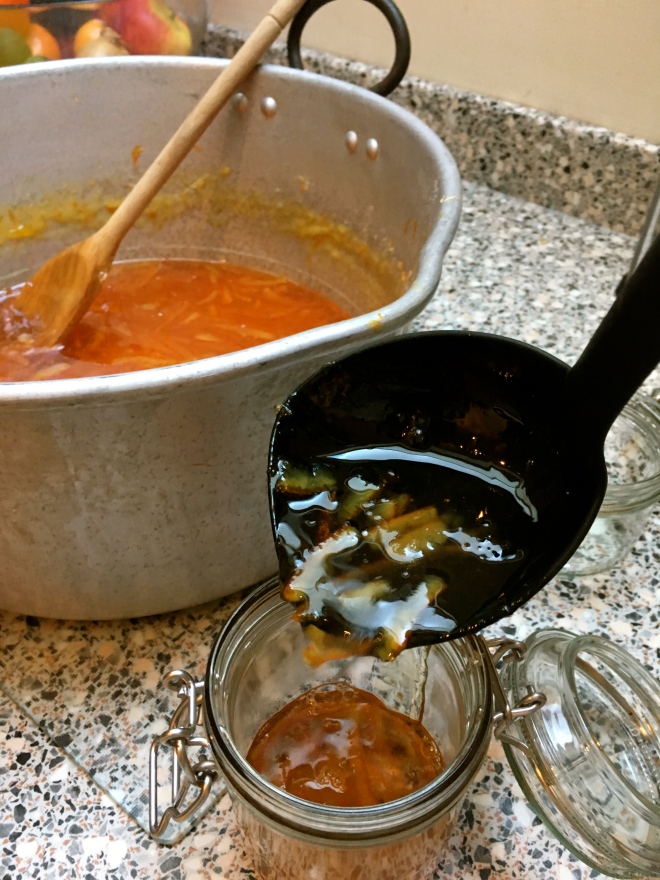With the hot dry summer we were having until a few weeks ago I thought the blackberries would be small dry and bitter this year but it seems the rain came just in time. Beautiful big juicy berries are all over the woods behind our house. So out we went with tubs to fill, me in my yellow wellies Joel in shorts (shorts?!?!) and in half an hour had easily filled 2 large tubs. I could not recommend it more as a Sunday afternoon activity being out in the woods picking fruit really takes you back to being a kid again plus free fruit! I made a crumble of course (blackberry, apple and orange with an oatey topping) and some blackberry vinegar to try and keep the flavour of these delicious fruits for the months ahead and to liven up some winter salads.
Quick garden update: both the veg and the flowers are massively appreciating the rain, the greens are doing particularly well now and I have been handing out green bouquets of lakes, chards and aztec broccoli (watch this space). I have one very small butternut squash from my roadside seedling purchase so fingers crossed but in my heart of hearts I suspect it won’t ripen very well in a Manchester autumn but it’s been loads of fun to try.
Blackberry and Sage Vinegar
- 700g blackberries – rinsed
- 700ml apple cider vinegar
- 350g granulated sugar
- 6 Sage leaves
Optional equipment- paper coffee filters
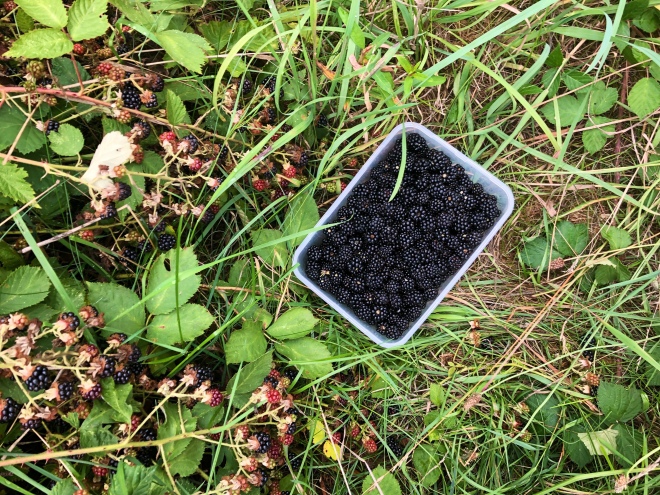
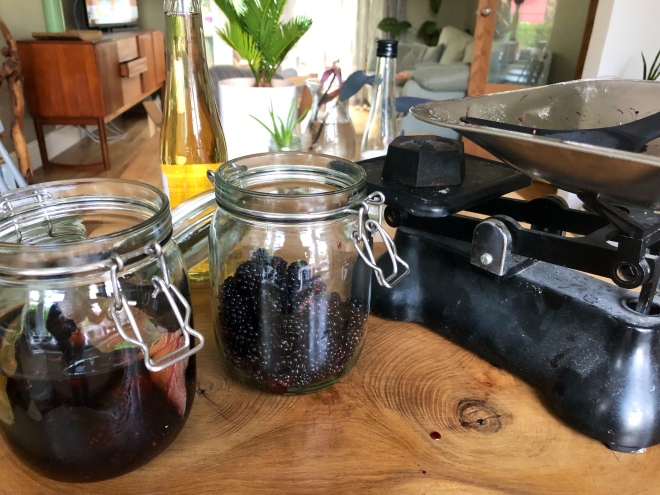



In a Kilner type jar (who actually buyer kilner when Ikea do them so cheap?!?) add your blackberries, sage leaves and vinegar.
Leave for at least a week although 3 weeks would be better.
Strain the vinegar through a sieve into a pan and discard the blackberries.
Add the sugar to the pan and heat over a low heat until all the sugar has dissolved.
Once the sugar has dissolved bring to the boil and then simmer for 20 minutes stirring occasionally.
Leave to cool.
I then like to filter the vinegar as it creates a lovely clear liquid and will last longer as you have removed impurities. To do this arrange a coffee filter in a funnel over the bottle you will store the vinegar in and slowly add the vinegar to the filter ensuring it doesn’t go above the top of the paper.
Enjoy!
I would use this on salads – delicious with bitter leaves or peaches. You could also use it as the base of a sauce to go with venison or duck in the winter.
Ps Joel’s legs looked like he had had a run in with a gang of angry cats – morale of the story don’t wear shorts to pick blackberries!
